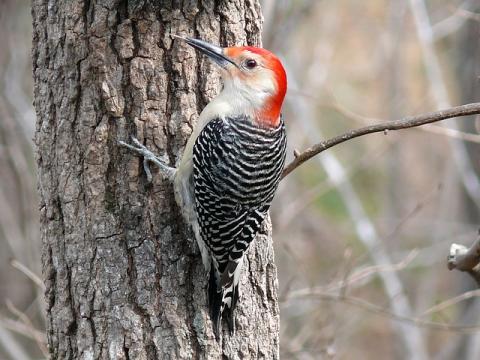Why is a woodpecker knocking on the cedar shingles of my house and how do I make it stop?

Woodpeckers bang on houses this time of year for two main reasons; territorial drumming and foraging. Woodpeckers attract prospective mates and deter competitors in their territories by “drumming”, essentially using the siding on houses as a musical instrument. This behavior is generally more irritating than damaging. Take a good look at the shingles the birds has been tapping on. The evidence of drumming will look like small, shallow, conical dents in the wood.
If the bird is actually creating large holes, it is probably foraging for insects that are beneath the shingles of the house. Some insects such as carpenter bees are attracted to wooden shingles, where they will bore into the wood to lay their eggs and overwinter. Woodpeckers can hear and feel the insects under the shingles and will drill holes in the siding to reach the insects.
You can try employing visual deterrents to deal with nuisance woodpeckers. Suspended items that move in the breeze such as scare eye balloons and reflective streamers and will sometimes frighten birds away. You can also try excluding birds by attaching netting to the overhanging eaves of your home and fastening it three inches away from the side of the house. If the woodpecker is creating foraging holes, you should start by addressing insect infestation issues.
Never use a tactile deterrent, as these sticky materials can stain siding and get on birds feathers, making it difficult for them to fly and stay warm.
This was your Question of the Week. Got questions? The Ask UNH Extension Infoline offers practical help finding answers for your home, yard, and garden questions. Call toll free at 1-877-398-4769, Monday to Friday, 9 a.m. to 2 p.m., or e-mail us at answers@unh.edu.